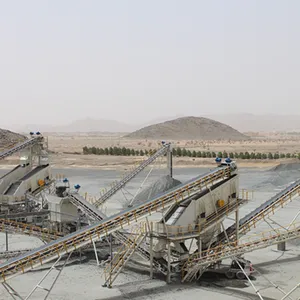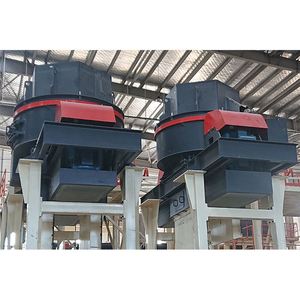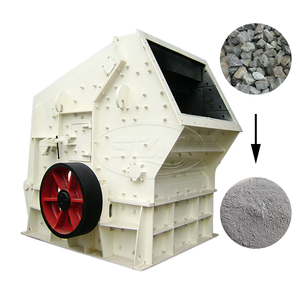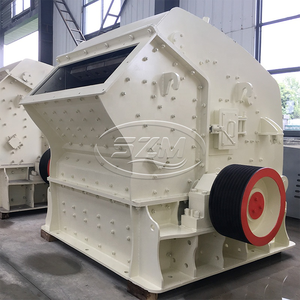
All categories
Featured selections
Trade Assurance
Buyer Central
Help Center
Get the app
Become a supplier

(29875 products available)








































Market Overview: The global impact crusher market has shown robust growth, with the broader Crusher & Shredder Market expanding from USD 995.63 million in 2023 to USD 1.04 billion in 2024, and projected to reach USD 1.46 billion by 2030 at a CAGR of 5.63%, according to 360iResearch. This growth is primarily driven by increasing demand across various sectors, including construction, mining, and recycling. The U.S. market, valued at approximately $557 million in 2023, is witnessing significant investments in infrastructure and industrial activities, further propelling the demand for impact crushers. Additionally, China is anticipated to experience a remarkable growth rate of 9.3% CAGR, reaching $761.4 million by 2030, indicating a strong regional demand for these machines.
Industry Insights: The impact crusher market is influenced by several key factors, including technological advancements and shifts in consumer behavior towards more efficient and sustainable machinery. As industries increasingly focus on reducing operational costs and enhancing productivity, the preference for electric and automated impact crushers has surged. Furthermore, the ongoing trend of urbanization and infrastructure development has led to a rise in construction activities, which in turn fuels the demand for impact crushers. Major players in the market are adapting their strategies to cater to these changes, with an emphasis on innovation and eco-friendliness. The industry's growth trajectory suggests that the impact crusher market is well-positioned to capitalize on emerging opportunities, particularly in niche markets such as recycling and waste management.
An impact crusher is an industrial machine used to crush stones and other hard materials. Different types of impact crushers are available to suit specific crushing needs in a production line.
Horizontal Shaft Impact Crushers
A horizontal shaft impact crusher (HSI) functions quite a lot like a hammer mill. It is built with a massive rotor that flings the material at a fixed plate. This impact forces the material to break into smaller sizes. HSI impactors are typically used for softer and less abrasive stones. They are very effective for crushing limestone and gypsum.
Hydraulic Impact Crushers
An impact crusher’s driving force is usually a fly wheel. However, some models use hydraulic energy to carry out the impact crushing. A hydraulic impact crusher (HPI) crushes hard materials using high-pressure liquid power. These crushers are more massive to accommodate the hydraulic components. They tend to have higher crushing ratios and offer more controlled sizes of end products.
Vertical Shaft Impact Crushers
These crushers are also known as VSI crushers. A vertical shaft impact crusher (VSI) has the motor on top, unlike the HSI. The motor drives the rotor directly, which then throws the stone upwards and against the surrounding anvil ring. The crushing forces may be gravitational pull or the surrounding anvil ring. The crushing force is usually more than that of horizontal crushers. The end products have fine aggregates and are excellent for use in asphalt and concrete mixtures.
Reversible Impact Crushers
This type of impactor can change the direction of the rotor after a certain period. This makes it easy to maintain and wear parts. It also evens out the abrasion on the parts used to crush the material. A reversible impact crusher is more efficient and can be used for a long time without incessant stoppages for maintenance.
Some specifications of an impact crusher are as follows:
In addition to the specifications, the maintenance of impact breakers is also crucial.
First, regularly check the fasteners to see whether they are loose or damaged. Please tighten and replace them if necessary. Second, check the condition of the hammers and impact plates to see whether they are worn or damaged. Impact crushers have inherent advantages in terms of easy-to-replace parts and repair.
Third, ensure the lubrication of bearings and rotors to avoid excessive abrasion and heating. A detailed maintenance schedule can assist in the upkeep of the impact crusher:
An impact crusher is essential for construction projects. This machine helps to break large concrete pieces, stones, and rocks into smaller ones. The resulting smaller pieces are more manageable and convenient for further use or transportation. In building new roads or repairing old ones, an impact crusher can help crush the concrete used for the old road or demolish an old building.
Using an impact crusher is much more convenient and easier than using a manual or portable rock crusher. The material produced is uniform and more refined from an impact crusher than any portable rock crusher. The machine's production is more significant, and its use is more effortless. Full-sized boulders that might pose a problem to a construction site are easily broken by the impact crusher into smaller stones and gravel that can quickly be used for a project.
Quarries mainly use impact crushers. A primary impact crusher takes large volumes of feed. It serves as the first stage of crushing. The material produced after the first stage will usually go through a secondary impact crusher, which produces a more refined and precise end product.
Besides construction projects and quarries, an impact crusher can also be found in the recycling industry. The impact crusher makes it easier to recover valuable reusable materials found in construction waste, mining waste, or any other valuable waste material. The recycling industry capitalizes on these reusable materials to reduce costs.
Several factors need to be considered when selecting the appropriate impact stone crusher for a particular application or use. These factors are consistent with the popular demand for how to choose an impact crusher.
Q1: What kind of motor do impact crushers have?
A1: Impact crushers are usually equipped with asynchronous AC motors with different power requirements, depending on the crusher's size and the material to be broken.
Q2: What kind of bearings do impact crushers use?
A2: The rotor bearings of impact crushers are mainly double-row spherical roller bearings. The double-row bearings can withstand radial loads and axial loads in both directions, allowing them to withstand the heavy weight of the crusher rotor. Meanwhile, they have greater stability and bearing capacity. For some small-sized crushers, single-row bearings can also be used.
Q3: How to maintain an impact crusher?
A3: Regular inspections should be performed to check whether the internal parts are wearing out, particularly the impact plates and blow bars. If any parts show signs of wear, they should be repaired or replaced promptly. Besides, lubricating the equipment parts can reduce friction and wear and improve the impact crusher's efficiency and service life.